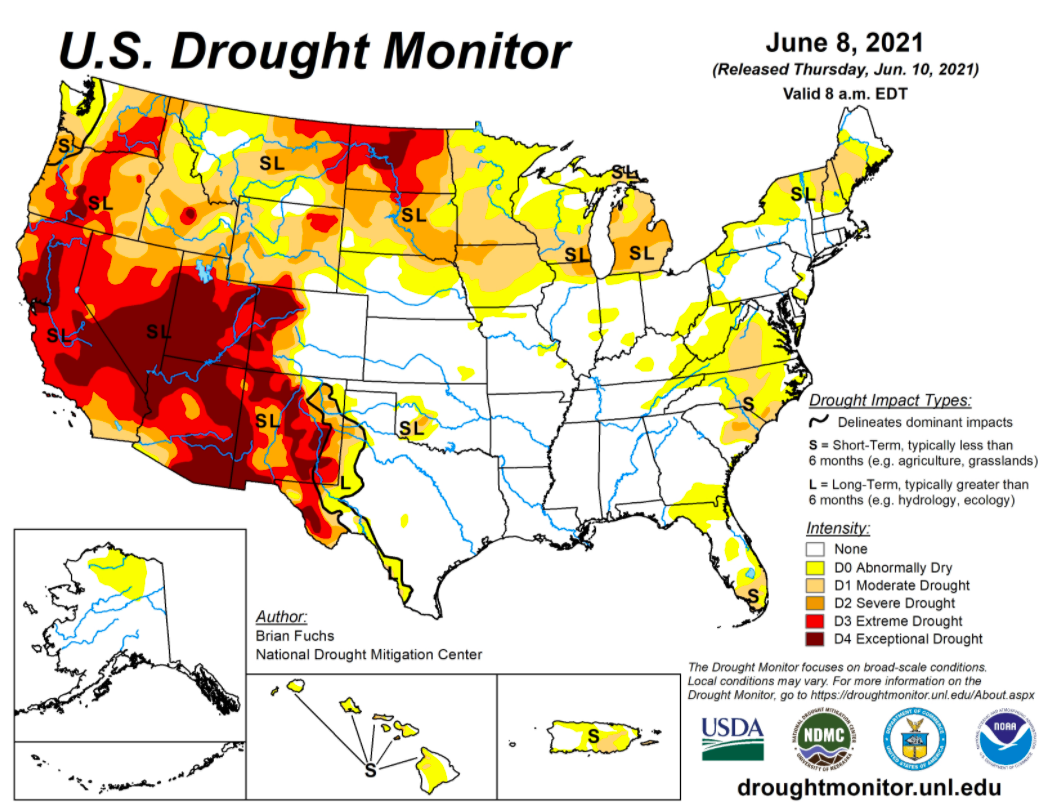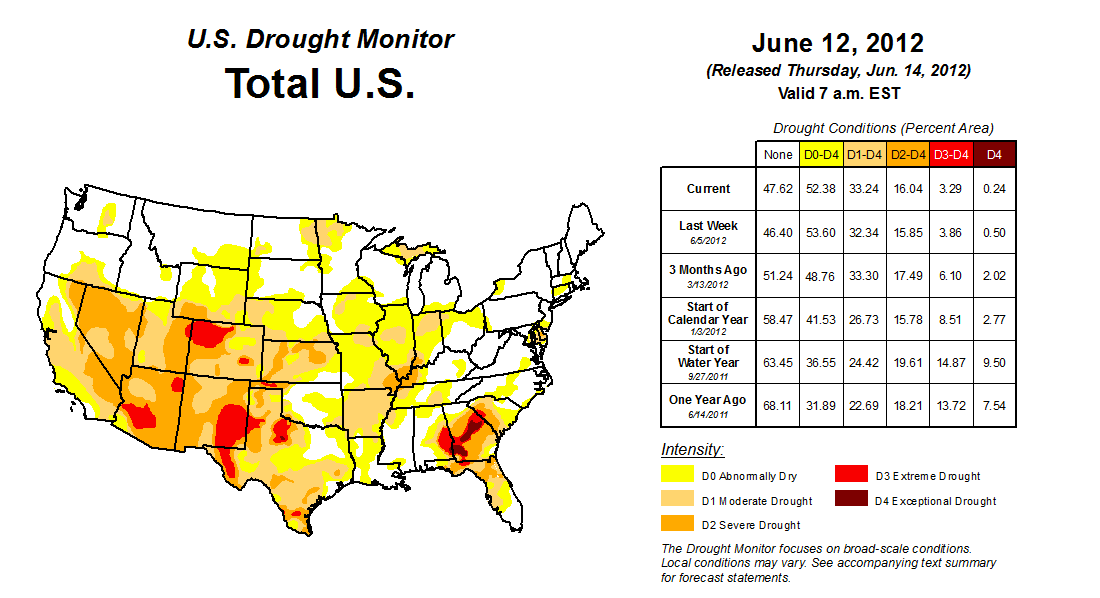As Heat Builds, Current Drought Conditions Already Exceed Devastating 2012 Season
Devastating Drought 061421
Drought conditions in the West are continuing to expand...and hotter temperatures aren't helping things. The trek of drought conditions started in January, and it's continuing to build.
The latest U.S. Drought Monitor shows 61% of the country is seeing some level of dryness with more than 21% in the D3/D4 category. That compares to the same week in 2012 when 52% of the U.S. was under some level of drought, and 3% of the country experienced D3/D4 conditions. a comparison also shows drought conditions in California are much more severe


Heat started building over the weekend and will continue to heat up this week. The climbing temperatures are not good news for areas already dealing with that drought.
"As you can see by the jet stream already as we start this Monday, intense heat through the Southwest on up into Colorado, reaching all the way into the mountains of Montana and into North Dakota," says Mike Hoffman, AgDay meteorologist. "But look what happens as we head through the middle of the week. In fact, by Thursday, we're cutting down that ridge a little bit into the far northern mountains and the Northern Plains. And the models are indicating that everything starts to get shoved back southward. That would be a little bit of relief from all the intense heat as we head into the following week. So let's say a week from now, at least, that's what we're hoping at this point, and that's what all the models are showing."
The extreme dry weather impacting the western part of the U.S. could soon have economic impacts across the entire country, especially when it comes to food prices. The drought is already causing major disruptions to the ag industry.







